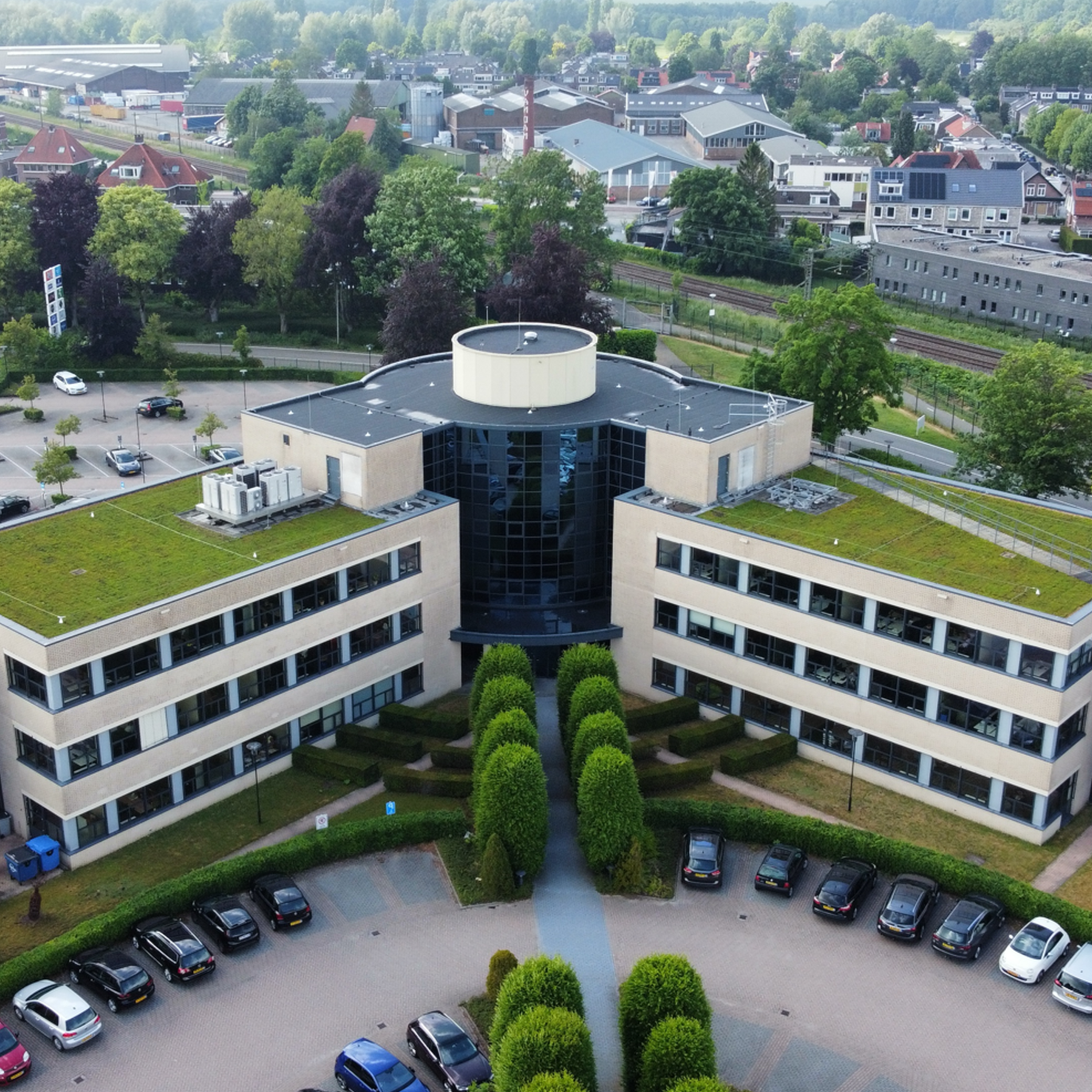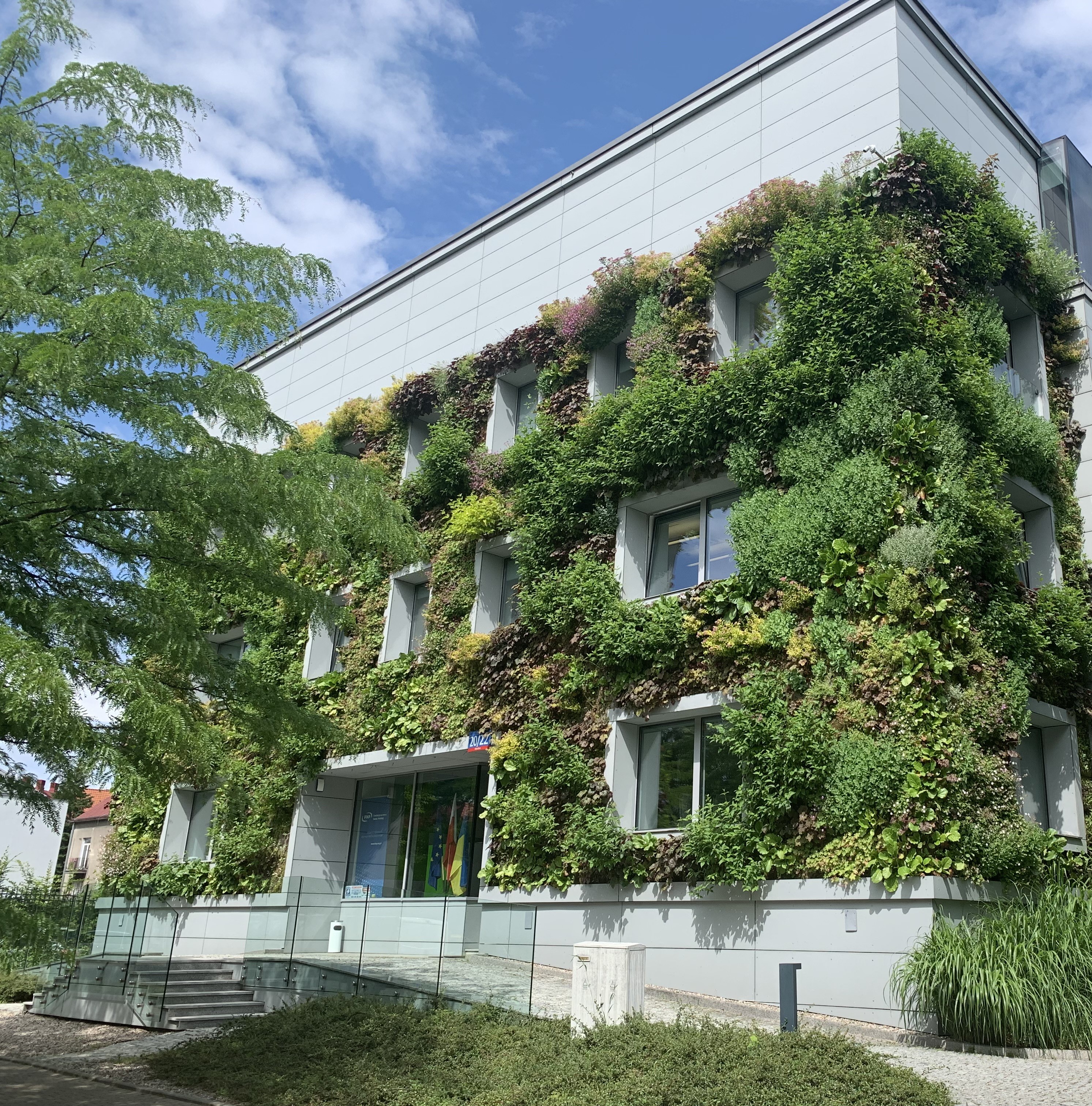Green Renovation: Sustainable Solutions to Climate Challenges
Posted on Monday 15 July, 2024Our rapidly warming climate makes the urgency of climate change mitigation clear every day. Extreme heat, deteriorating air quality and peak rains increasing in number and severity have a profound impact on our urban environment. The construction sector plays a crucial role in addressing these challenges. In doing so, we see an important shift in strategy emerging: renovation is increasingly preferred to new construction. By renovating existing buildings and making them more sustainable, the building sector can contribute significantly to reducing CO2 emissions. Sustainable renovation not only boosts energy efficiency, but also increases the resilience of buildings to extreme weather conditions. Property owners and managers, government agencies and policymakers, as well as environmental organisations and sustainability consultants, have a vital role to play in promoting this transition. Together, we can and must build a sustainable future that protects both our cities and the environment.
Green renovation: what are the opportunities and possibilities?
Green renovation is important for the city's climate adaptation. Why? Greenery has a cooling effect, greenery reduces flooding and greenery increases infiltration capacity, which can also combat drought. By identifying the various problems caused by climate change, we show the opportunities and possibilities for green renovation.
1. Extreme rainfall -> collect and retain water on the green roof (where it falls first)
We are facing increasing challenges with extreme weather. Intense downpours, powerful storms and prolonged periods of drought and heat are headed our way. In addition, the cost of protecting land from flooding is high. Extreme weather can also lead to shortages of drinking water and food.
To reduce flooding caused by extreme rainfall, grey roofs can be fitted with green roofs. For rainwater management, special green roofs have been developed that can retain excess rainwater for long periods. Thus, rainwater is collected and temporarily stored where it falls first. The water is then discharged to the sewer in a delayed manner, preventing flooding at street level. This type of green roof is often called retention roof, detention roof or blue-green roof. The Detention Roof, which can also be applied to existing roofs with slopes, has been extensively tested in and thus a proven green roof construction for rainwater management. About half of all roofs are flat roofs and most of these flat roofs are currently unused. So there are great opportunities here for collecting rainwater precisely where it actually falls. The big advantage of a Detention Roof is that it is a lightweight green roof system. This allows it to be applied on existing buildings and thus for roof renovation. This type of green roof also complies in general with the local water board's or municipality's water regulation.
2. Heat stress in the city -> green wall or green roof offers cooling effect
With increasing global warming, heat stress in cities is becoming an ever-greater problem. In the past 130 years, global temperatures have already risen by 1 degree. If greenhouse gas emissions continue at the same rate, the global average temperature will continue to rise. This warming will not only shorten winters, but also trigger the growing and flowering season earlier in the year. These changes have far-reaching consequences for both humans and nature. Habitats of animals and plants shift due to higher temperatures, which can lead to the extinction or migration of species from their original habitats. At the same time, climate change can actually increase some habitats. Well-known examples of this are the permanent establishment of the Asian tiger mosquito or the Asian hornet outside Asia.
But there are also dangers for people in high urban temperatures. Heat can cause symptoms of fatigue, difficulty concentrating and shortness of breath. And for people with cardiovascular diseases, the risk of heart attack or stroke increases. When the outside temperature gets too high, the body has more trouble dissipating heat and risks overheating. This is especially dangerous for the elderly or people with underlying conditions, according to research by the Dutch RIVM: 250 people die every year due to heat, 31% of which can be attributed to climate change.
The study 'The Heat-Proof City' by the University of Applied Sciences of Amsterdam shows that 10% more greening leads to half a degree less heat in the city. A simple way of greening petrified surfaces in the city is by adding a green roof or green facade to existing buildings. Green retains a lot of moisture and therefore cools the immediate environment.
The application of greenery to petrified surfaces is therefore of great importance for the city. In the image below, taken with a thermal camera on a hot summer day, you can clearly see the temperature difference between a green and a non-greened/ petrified surface (left: facade, right: roof).
These images were taken on 14 August 2023. Below is a graph of the weather conditions on this day:
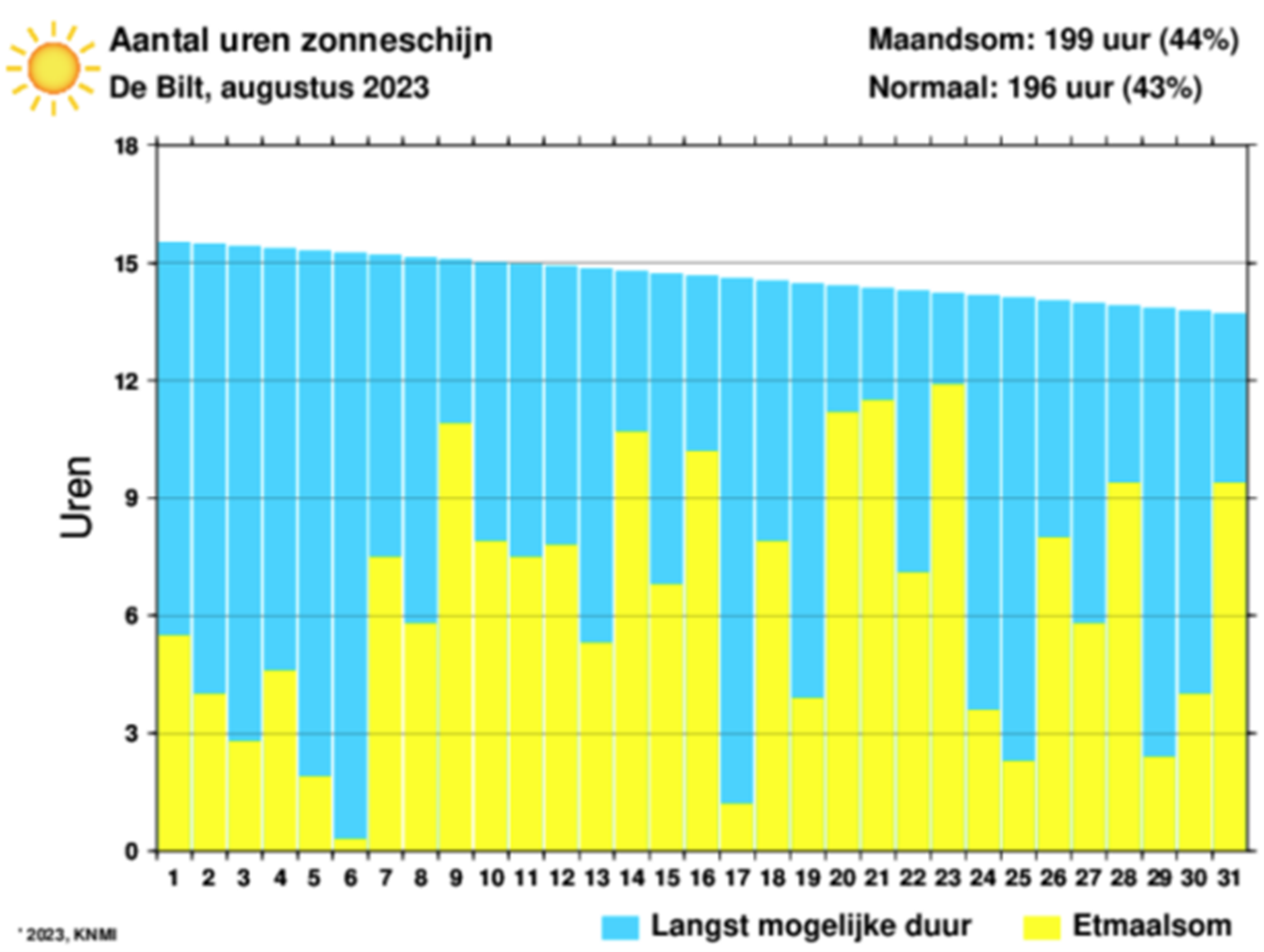
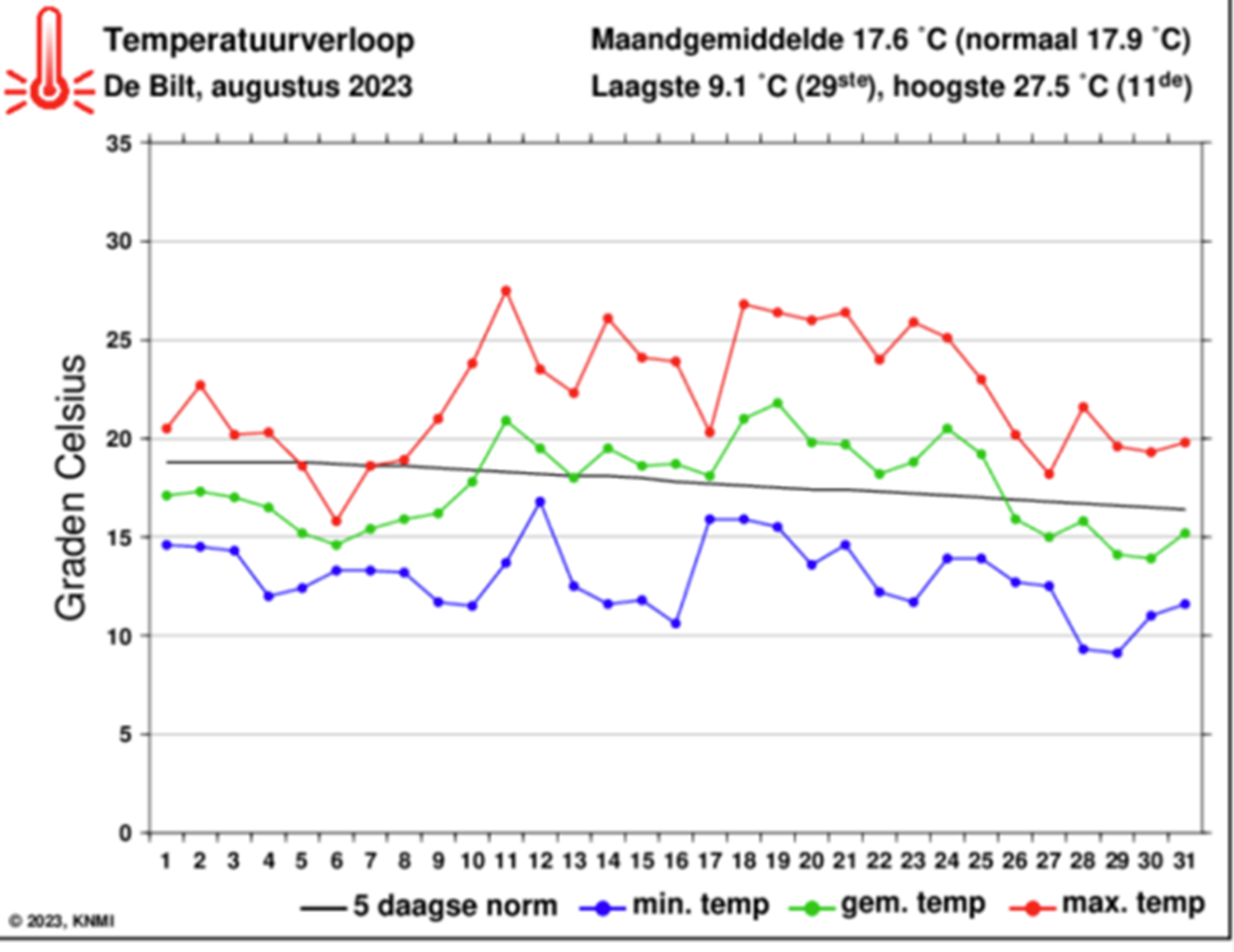
In fact, it is not only outside in the city that it becomes more pleasant when there is a green roof or green facade nearby. For the indoor climate, a green roof or living wall also provides a more pleasant environment. The air conditioner does not have to work as hard, which also leads to energy savings.
An additional benefit of greenery is its positive effect on biodiversity. Green roofs and green walls provide habitat for insects and small birds, promoting biodiversity in urban areas.
3. Poor air quality -> plants in green facade or green roof purify air
Climate change not only warms the air, the quality of the air we breathe also deteriorates significantly on hot days. This is because there is more ozone and more pollutants, pollen and mold in the air on hot days. Reduced air quality has health implications, think of respiratory problems or allergies. Infectious diseases also get more space in warmer and more humid climates.
Plants are known for their air-purifying properties. Plants extract CO2 from the air and convert it into oxygen. Thus, they naturally create healthier air quality. The more plants, the better the air quality worldwide. Applying a green façade to a building has a great effect on the air quality in its immediate surroundings. Thanks to the high plant density of a SemperGreenwall, 1m2 of green wall removes 2.3 kg of CO2 from the air per year. In addition, this one square metre produces as much as 1.7 kg of oxygen.
So, when undertaking a facade renovation, choose to install a green facade right away. Green walls can serve as a replacement for a building's outer shell. This is because a SemperGreenwall is completely waterproof and water-resistant.
Similarly, on the roof, Sedum plants, grasses and herbs absorb pollutants from the air. Think of particulates and CO2. So opting for a green roof is also a good idea during a roof renovation.
Green renovation: innovations for the future
Innovations in green renovation are in full swing. At Sempergreen too, we are not resting on our laurels. Here are some of the many developments the Sempergreen innovation team is currently working on:
1. Biobased green roofs
Sempergreen offers a wide variety of types of green roof systems. From a traditional green roof to a water-storing, solar, biodiverse, flat or sloping green roof. The latest development in our product portfolio is the Biobased Green Roof. It uses sheep's wool as a substrate layer. The first pilot project has already been realised in the Dutch city of Bergen op Zoom and the results are promising. We will tell you more about it soon!
2. Lightweight Solar Green Roof - combine green with solar energy
The Solar Green Roof offers the best of both worlds. Besides generating sustainable energy, you enjoy all the benefits of a green roof. In addition to the standard Solar Green Roof System, Sempergreen has now developed a lightweight solution in collaboration with Over Easy Solar. Now you will never again have to choose between a green roof or solar panels, with the Solar Green Roof Lightweight you have both. And another advantage: even existing green roofs can be upgraded with this Solar System, the ultimate retrofit!
3. LCA - calculation of environmental impact of building products
At Sempergreen, we think about the impact of our actions every day. That is why we are currently mapping the environmental LCA of our products. LCA stands for life cycle analysis, also known as Cradle-to-Grave analysis. This involves calculating a product's impact on the environment. From extraction of raw materials to production, use and waste disposal. This allows us to further improve the environmental impact of our construction products.
Case studies: what does green renovation look like in practice?
Do you wonder what green renovation looks like in practice? Below we show a number of case studies. These are just some of the many projects we have had the pleasure of contributing to over the past decades:
1. Gumball factory in Amsterdam, Netherlands
Designed by NEXT Architects, the former production hall of the Gumball Factory in Amsterdam is being transformed into KBF Warehouse, a modern hotspot and workplace for creative entrepreneurs. Part of this transformation is a green roof renovation. One of the multifunctional roofs now features a 400 m2 Retention Roof. This blue-green roof solution captures rainwater, buffers it on the roof and provides delayed discharge to the sewer system. The Gumball Factory Amsterdam is the first nominee for Roof of the Year 2024.
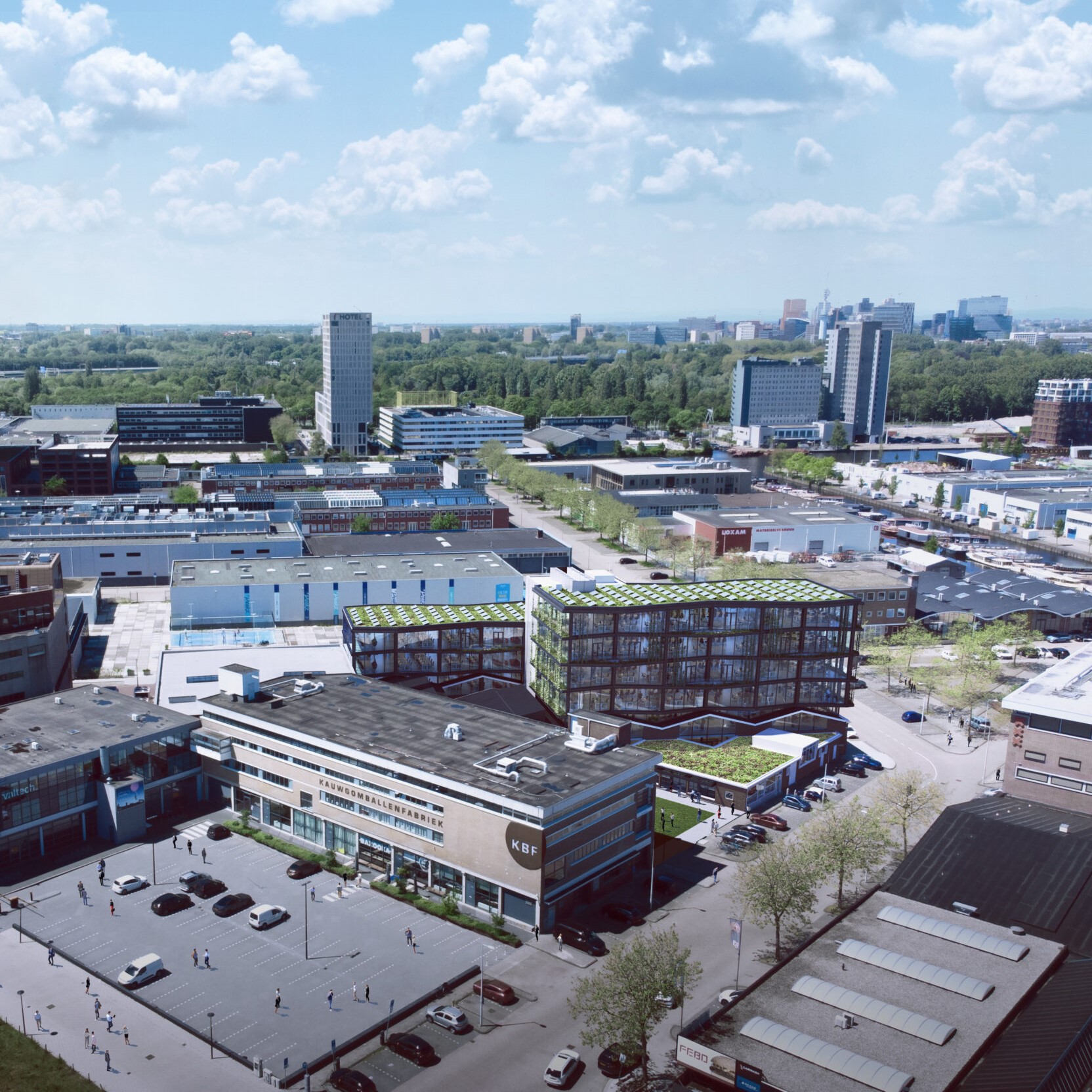
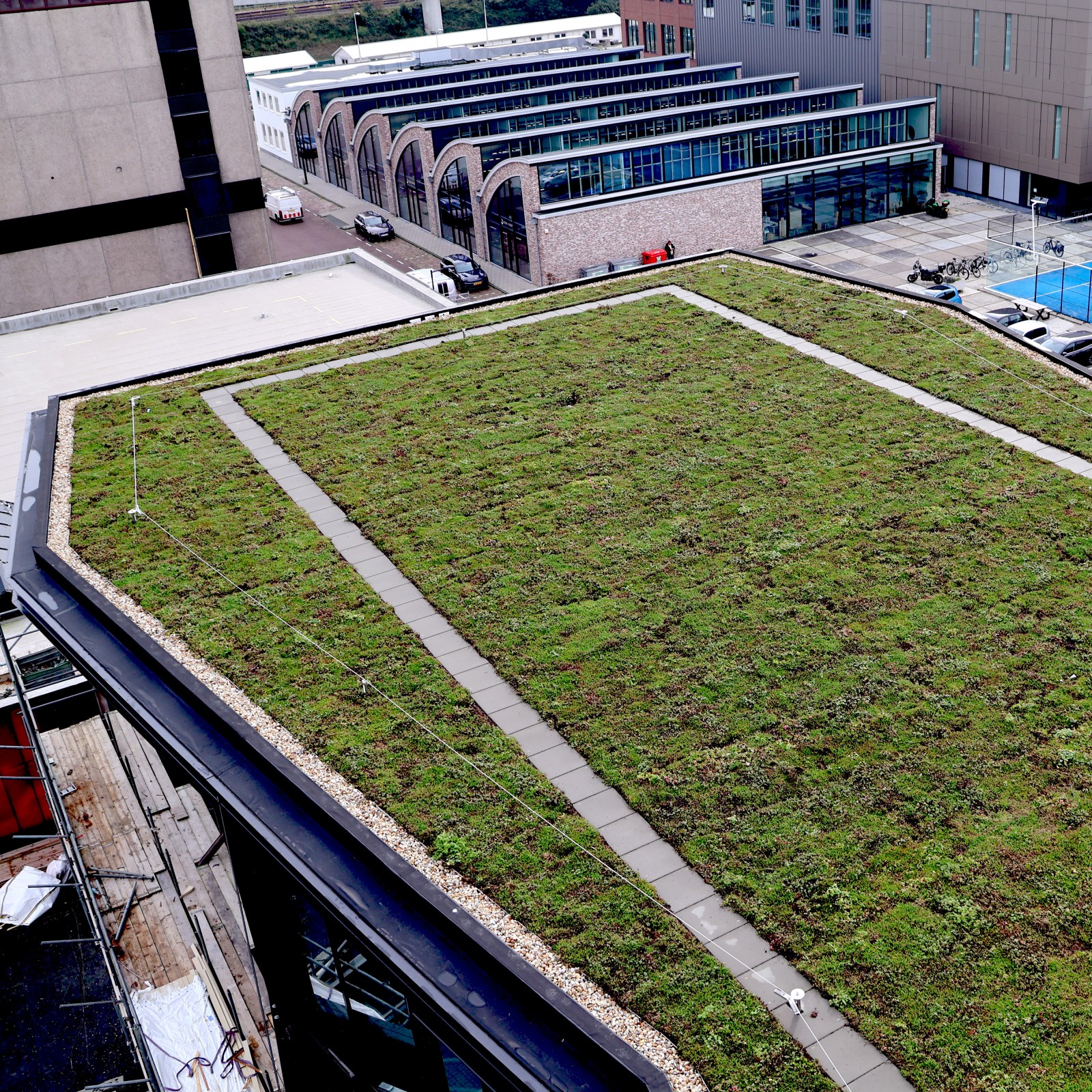
Green roof renovation on Gumball Factory Amsterdam (credits: left; NEXT Architects, right; Daktec)
2. Expansion of existing green roof with Over Easy Solar in Dilbeek, Belgium
In this project in Dilbeek, Belgium, an existing green roof was developed into a multifunctional roof where plants and solar panels work together. Over Easy vertical solar panels were used for this purpose. This lightweight solar system is easy to apply, as it is installed without mechanical fixation or ballast. Moreover, this system has solar cells on both sides (bifacial), optimising energy generation. Applying a new system to an existing solution is also known as Retrofitting. Thanks to the vertical arrangement of the solar panels, enough space is left for greenery and any maintenance can be carried out easily.
Green roof with Over Easy Solar in Belgium (credits: Solar Batteries)
3. Climate-positive logistics centre of Brauerei Zum Kuchlbauer in Abensberg, Germany
At beer brewery Zum Kuchlbauer, they don't like half-measures. They wanted to transform their logistics centre into a climate-positive and fully self-sufficient building. And they succeeded, amongst other things by applying a SemperGreenwall Outdoor and a green roof with solar panels. With its 450m2 surface area, the green wall covers 50% of the entire façade. The other 50% of the façade consists of wood, a renewable resource. Collected rainwater is reused to irrigate the green façade. Moreover, the living wall makes an important contribution to biodiversity in the area and the living and working environment of the employees of this regionally large employer.
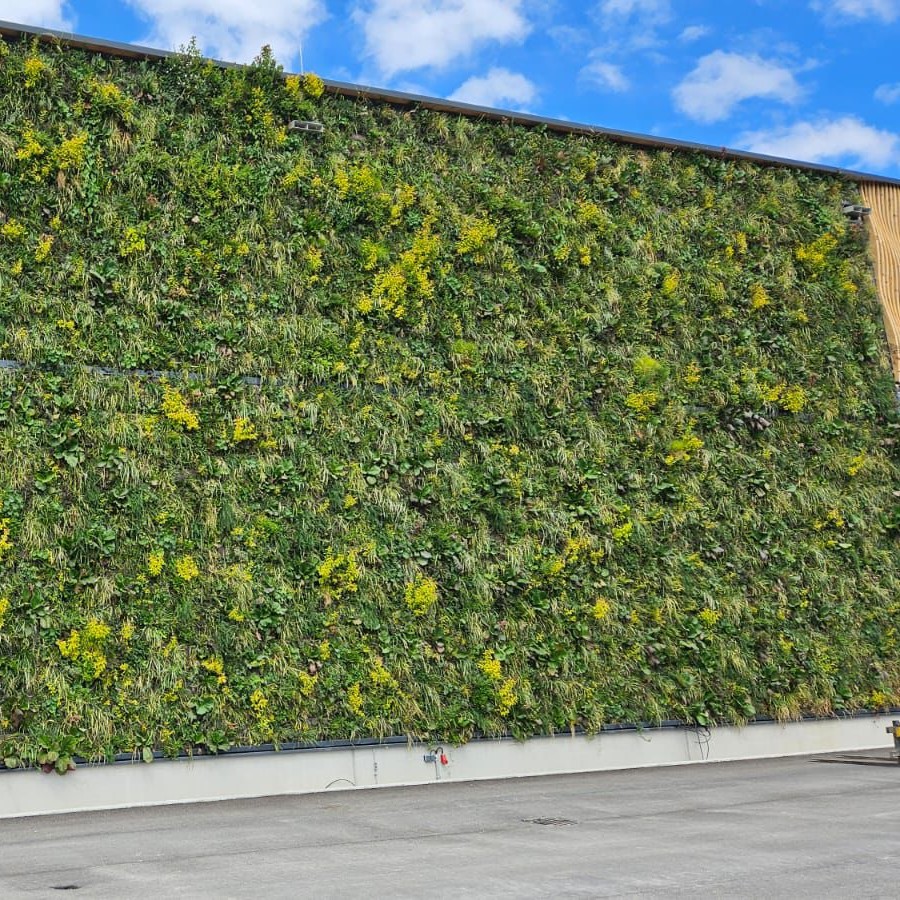
4. FNP Headquarters Warsaw
The green facade at the FNP headquarters in Warsaw has well and truly proved its worth. This SemperGreenwall was installed more than 10 years ago and still the green wall grows and flourishes exuberantly. This is not only a beautiful sight for this 1930s apartment complex that has been transformed into a modern office building. Besides all the benefits of greenery, this redevelopment has also led to:
- Energy savings: by creating an atrium with skylights, natural light flows into the building and savings are made on energy costs for lighting.
- Water conservation: rainwater and water from the basins (called grey water) is stored in the storage reservoir and then reused to flush toilets.
- Complete waste separation: organic waste, once properly treated, is used to fertilise the garden next to the building.
Building sector collaboration - key to tackling climate change
The urgency of climate change calls for direct and concerted action from all stakeholders in the construction sector. Policymakers, businesses and consumers each have a crucial role to play in reducing the construction sector's impact on our climate. It is time to work together on solutions that both reduce our carbon footprint and contribute to a healthy, resilient living environment.
At Sempergreen, we are committed to sustainable construction and renovation. As an expert and trusted partner in this sector, we offer innovative green solutions that improve air quality, reduce heat stress and promote biodiversity. Our green facades and roofs contribute to a healthier urban climate and help your project meet the highest sustainability standards.
Let's take responsibility for a better future together. Sempergreen is ready to support you with expert advice and high-quality, sustainable products. Through 'Replanting the Planet', together we can build a world that flourishes both economically and ecologically.

